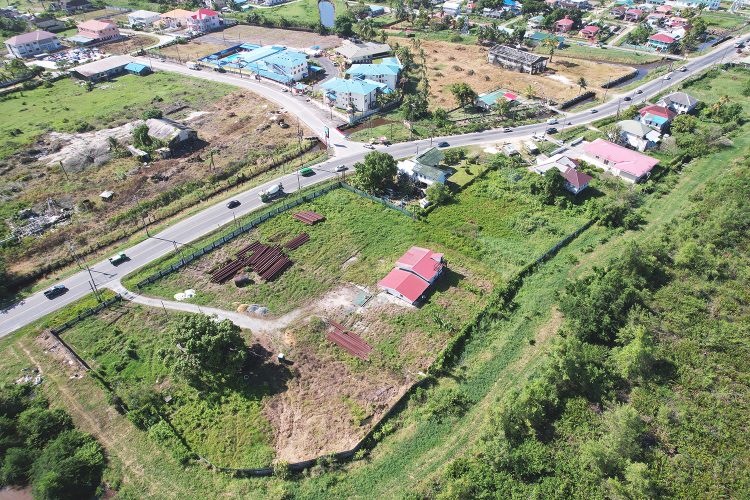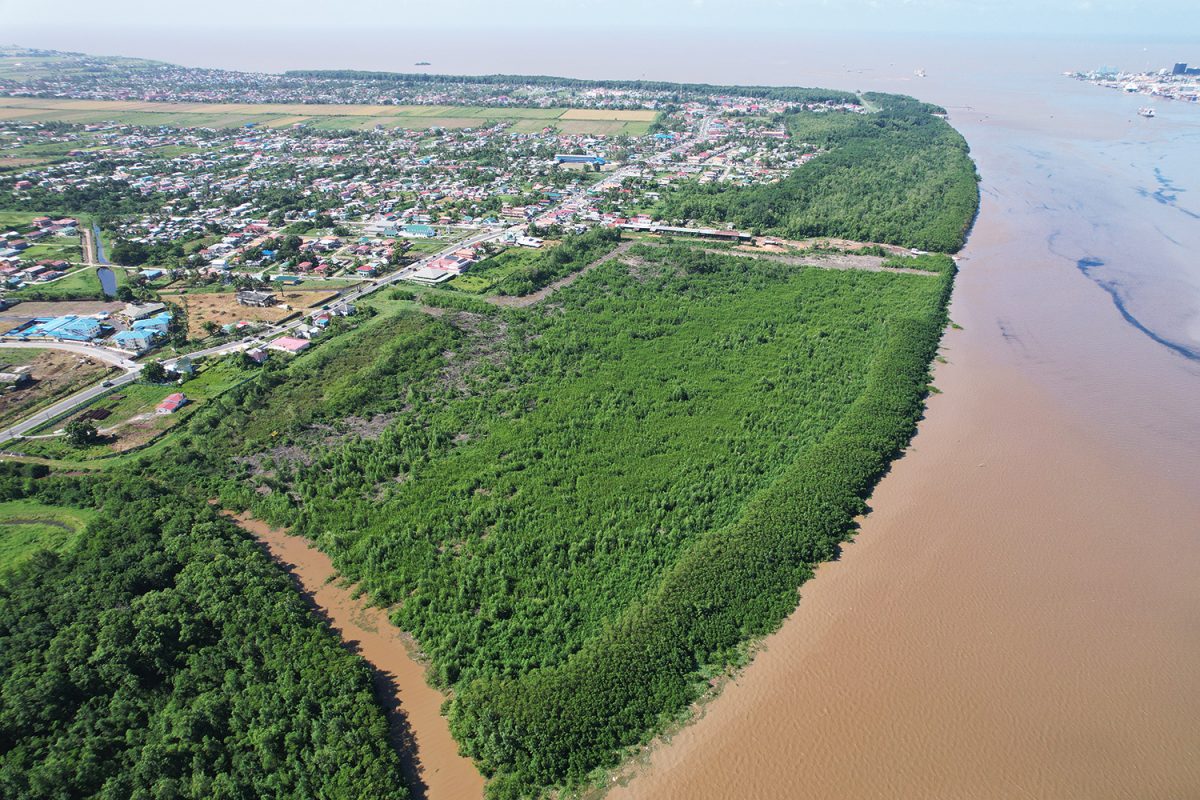With works on the proposed Versailles, West Bank Demerara shore base on pause for the past year, protected mangroves that were bulldozed to facilitate construction have since regrown.
A large swathe of mangroves was uprooted from the Malgre Tout/Versailles, West Demerara foreshore early last year in preparation for the TriStar Inc oil and gas shore base facility. TriStar is owned by Florida, USA-based Guya-nese, Krishna ‘Kris’ Persaud
During a recent visit by Stabroek News, the area could be seen slowly returning to a state of normalcy as lush vegetation continues to grow and occupy areas that were cleared. It was observed that the yards where materials are stored have also been taken over by vegetation and the materials have remained in the same position they were originally placed, a sign that infrastructural activity has been dormant for months.

As the mangroves continue to thrive in their natural environment, the question is now being asked whether the Florida, USA-based company will once again clear them when and if works resume. Man-groves are a protected species in Guyana and it is illegal to remove them, but the government has sought to defend this as being ‘necessary’ for development.
Given Guyana’s climate change commitments and mangroves being a carbon sequestering plant, will government permit its removal a second time around?
TriStar faced severe criticism last year over its destruction of the large swathe of mangroves from its 66-acre property at Versailles/Malgre Tout as part of preparatory works for its planned shore base.
Promises by the developer to construct a sea defence out of steel sheets in the area where the mangroves were removed are still to be fulfilled. Nearly 20,000 tonnes of steel sheet piles were being stockpiled by TriStar at its planned Malgre Tout offshore base as the company prepared to begin revetment works at the facility, Stabroek News reported last June.
Recently, this newspaper observed a large amount of steel sheets accumulating rust and lying on a portion of land a short distance away from the project site.
Previously, residents of Malgre Tout/Versailles had told this newspaper that there has been little to no flooding during spring tides. One man said that water normally accumulates in his backyard but it is unclear to him if the removal of the mangroves contributed to that or it was a case of poor drainage in the area.
Responding to the questions posed by Stabroek News, the Minister of Public Works Juan Edghill had said last year that government was aware of the importance of mangroves in the protection of Guyana’s sea and river defences. It is with this in mind, he said, that government will be planting more mangroves across the country.
“We value mangroves and we will plant more mangroves and where development is taking place where mangroves will be destroyed we will have to have some compensatory measure to ensure that everything is done sustainably…” he emphasised.
Last year, government faced scathing criticism over the granting of permission for the removal of mangroves at the location for the development of the oil and gas shore base.
Following concerns by residents that they had been put at risk of flooding due to the clearance of the natural sea defence, Stabroek News reported that during preparation for the project, over 40 acres of mangroves were destroyed.
Last year, Chairman of Guyana’s Sea Defence Board Gary Beaton had told this newspaper that the company had cleared a large amount of mangroves, which it was not permitted to do, and had so far failed to make provisions to rebuild a river defence.
“They are in breach of the guidelines we offered with our no-objection. They have destroyed the sea defence without building one area, and they were expected to provide a work plan and schedule but that was not done,” Beaton responded when asked about the breaches committed by the developer. Since then, Beaton has not said anything else about the removal of the mangroves and the impact on sea defences.
“…The development that is taking place in Guyana is not willy-nilly. This is well-planned. Structured. Structured in a context to bring about real world-class development of Guyana… and that is not something to be sabotaged. That is something to be encouraged,” Edghill had stated during a press conference held in the boardroom of his Wight’s Lane, Kingston, Georgetown, office to address the removal of mangroves by TriStar Incorporated.
With Guyana now an oil producing country, Edghill contended that there are infrastructural developments that are required to facilitate and properly service what is taking place in the country’s Exclusive Economic Zone. In particular, he said that the development on the West Demerara to facilitate the “new wave of development coming to Guyana” would require the removal of mangroves. “At some stage, mangroves will be displaced,” he averred. “Mangroves will have to be removed.”
“…The big issue is not flooding because the adequacy of the measures, the hard structures to prevent flooding, are in place. So the big issue is if we should cut mangroves or don’t cut mangroves,” Edghill said back in May.
Major agencies which are a part of the Sea and River Defence Board had offered their no-objection to the application to remove the mangroves. The Sea and River Defence Board comprises the Central Housing & Planning Authority (CH&PA), the Maritime Administration Department (MARAD), the National Agricultural Research and Extension Institute (NAREI), the National Drainage and Irrigation Authority (NDIA), and the Environmental Protection Agency (EPA).
It is unclear what exactly has caused a delay in the TriStar project and whether it will still move forward.






